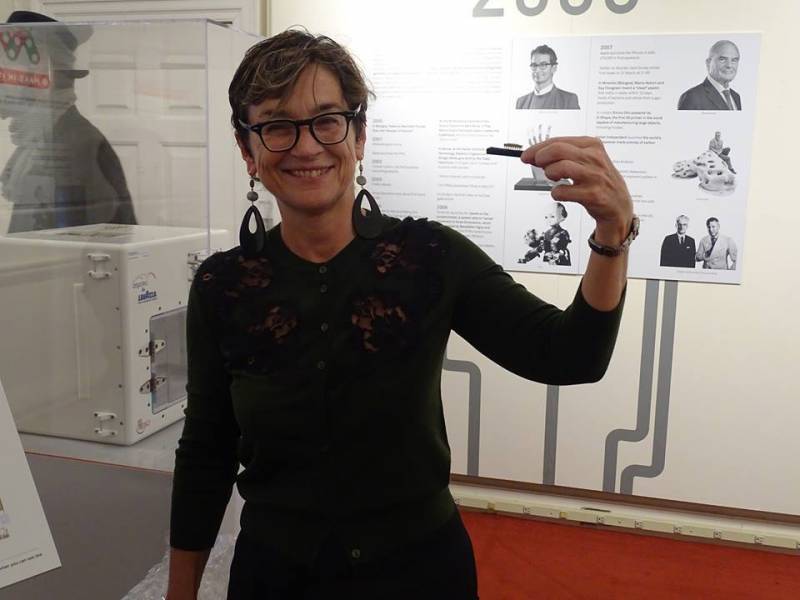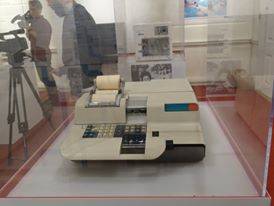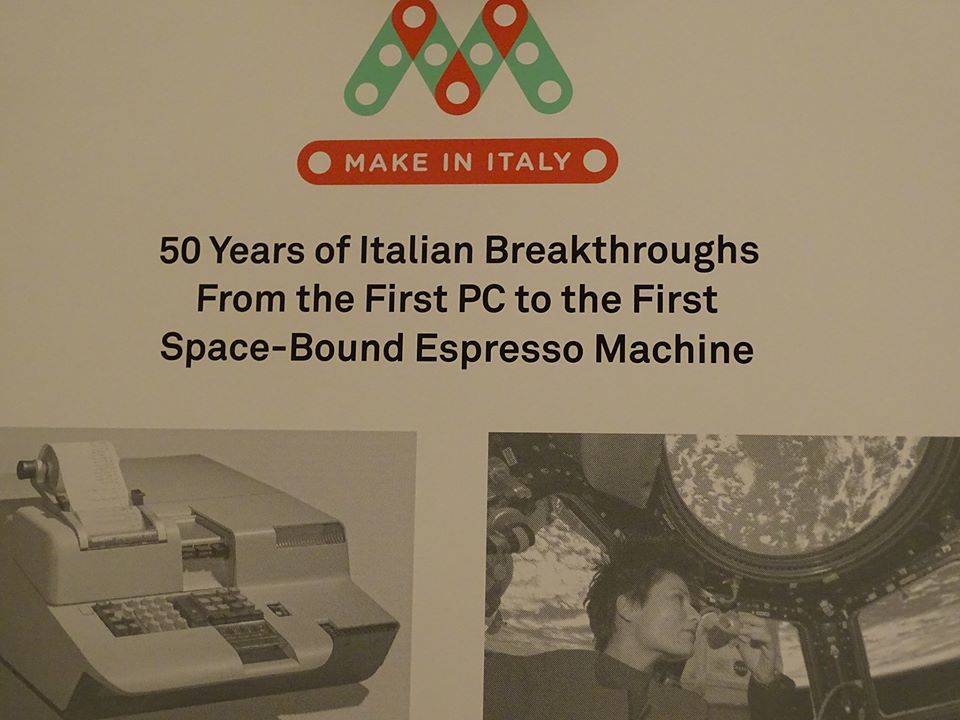“Make in Italy” Arrives in the Big Apple
Fifty years after its extraordinary debut in New York during the World’s Fair, Programma 101 (P101) is returning to the city. In October 1965, the machine was hailed by the American press as the “first desktop computer in the world.” Now you can admire it in the exhibition “Make in Italy - 50 Years of Italian Breakthroughs: from the First PC to the First Space-Bound Espresso Machine,” on display at the Italian Cultural Institute (ICI) in New York.
The exhibition kicks off with the celebration of P101, a computer created by a small group of “crazy” young Italian engineers led by Pier Giorgio Perotto at Olivetti, the Ivrea company then famous for its mechanical typewriters. In the 1960s the few computers in existence were cumbersome and accessible to experts alone. P101, on the other hand, fit on a desk and could be operated by a secretary. It was so successful that the US space agency NASA purchased one for the first mission to the moon in 1969. At ICI the public can watch a documentary about the history of the machine, “Programma 101: Memory of the Future,” directed by Alessandro Bernard and Paolo Ceretto.
But there’s more. The exhibition also showcases other cutting-edge products created and developed in Italy or by Italians over the last half century. Technological acumen is a little known offshoot of Italian creativity. Besides P101, four other objects serve as examples of Italian technological innovation.
The Intel 4004 was the first commercially available microprocessor in the history of computing. The “computer on a chip” was developed by Federico Faggin, a physicist who moved to Silicon Valley in 1968 to work at Fairchild Semiconductor, and later worked at Intel. Today, microprocessors are used in everything from smartphones to supercomputers.
Arduino is an open-source prototyping platform based on easy-to-use hardware and software. Arduino boards read inputs (light on a sensor, a finger on a button, a tweet, etc.) and turn them into outputs (activating a motor, turning on an LED, publishing something online). Its easy-to-use philosophy and smart design was inspired by the P101. It was such a beautiful object that in 2014 Arduino was acquired by MoMA. Credit for creating Arduino goes to Massimo Banzi and four partners. Arduino was conceived of as an easy tool for fast prototyping for students from the Interaction Design Institute at Olivetti’s “Casa Blu” without a background in electronics and programming. Now Arduino is used by a worldwide community of makers: students, hobbyists, artists, programmers, and professionals.
The third object, ISSpresso, is the first-ever system for brewing espresso in outer space. ISSpresso was created by two Turin-based companies, Argotec and Lavazza. David Avino founded Argotec, an engineering and aerospace software company specializing in astronauts’ training, in 2008. Argotec’s research on nutritional food for astronauts has led to the creation of healthy and tasty products available to consumers worldwide. “The idea for the space-bound coffee machine was the natural conclusion of the space meal,” explained Avino. Samantha Cristoforetti, an Italian astronaut with the European Space Agency (ESA), tasted the first “made-for-space coffee” on May 3, 2015 while docked on the International Space Station (ISS).
Finally, the company that gave us the first personal computer has now brought its first 3D printer to NYC. Olivetti’s printer is targeted toward small to medium sized companies that need a faster and cheaper way to make prototypes and develop new products. Olivetti continues to reinvent itself, embracing the revolution of digital manufacturing and the digital philosophy of sharing and collaboration.
The exhibition also features a timeline on panels organized by decades (from the 1960s to the 2010s). Each timeline highlights contributions to technological progress made by Italians. Did you know, for example, that it was the Italian mathematician Massimo Marchiori who inspired Larry Page and Sergey Brin to found Google? In 1995, Marchiori developed Hyper Search, the first algorithm for running an online search that used the concept of hyper-information, which selects results on the basis of their relevance by looking at their relation to the entire web. Marchiori presented his idea at an international convention in 1997 that Page attended. (Google was founded one year later.)
The “Make in Italy” installation in Rome and Milan is sponsored by the nonprofit foundation Make in Italy, chaired by Carlo de Benedetti, Massimo Banzi and the Italian “Digital Champion” Riccardo Luna. The NYC leg was made possible thanks to the commitment of the Italian Consul General Natalia Quintavalle, the new ICI director Giorgio van Straten and the President/Chair of the Italian Heritage & Culture Committee of New York Joseph Sciame, as well as the generosity of Commendatore in the Order of Merit of the Italian Republic Peter S. Kalikow, with additional support by Lavazza and Olivetti. The designers are Sara Matiz and Simone Polga of MAD Matiz Architecture & Design.
American high school students who have studied Italian as a foreign language will have the opportunity to visit the exhibition with special tours, thanks to the Italian American Committee on Education (IACE), a nonprofit organization chaired by Bernardo Paradiso, which promotes the study of Italian language and culture within the tri-state area. It’s nice to think that they learn to love Italy not only for our country’s food, fashion and art, but also for its technology.
The exhibition “MAKE IN ITALY - 50 Years of Italian Breakthroughs: from the First PC to the First Space-Bound Espresso Machine” opened November 12 at 6pm. at the Italian Cultural Institute in New York, 686 Park Avenue, from November 13-25, Monday to Friday, 10am-5pm.
……………….
Journalist and writer Maria Teresa Cometto curated the exhibition with Riccardo Luna. She is a US contributor to the Italian daily “Corriere della Sera” and co-author of “Tech and the City: The Making of New York’s Startup Community” (with Alessandro Piol).







































i-Italy
Facebook
Google+
This work may not be reproduced, in whole or in part, without prior written permission.
Questo lavoro non può essere riprodotto, in tutto o in parte, senza permesso scritto.